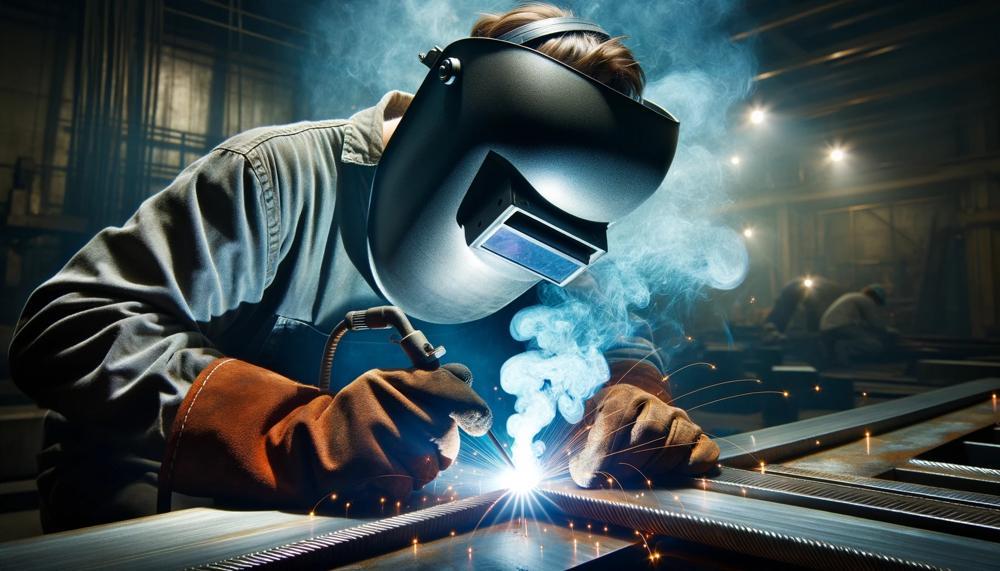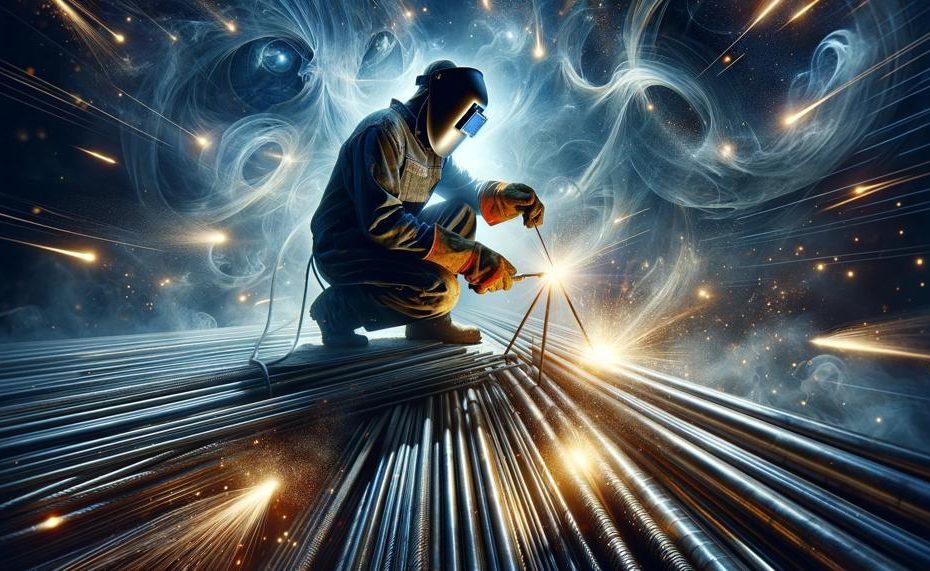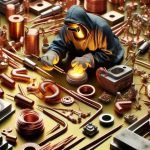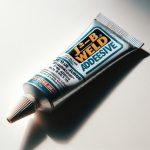Have you ever wondered why stainless steel, the paragon of durability and aesthetics in everything from kitchen utensils to skyscrapers, presents such a puzzle when it comes to welding? This introduction will unravel the intricate web of challenges faced in welding stainless steel, a material as complex as it is ubiquitous.
So, why welding of stainless steel is difficult?
Because stainless steel doesn’t disperse heat as efficiently as other materials, welding stainless steel may be challenging. High heat concentration and a higher chance of distortion and warping may result from this. Moreover, stainless steel is prone to bending and splitting due to its rapid thermal expansion.
Additional difficulties consist of:
- Heat sensitivity: Although stainless steel is heat resistant, it requires more time to cool down before usage due to its heat sensitivity. This sensitivity may cause the welded junction to deform, warp, or retain residual stresses.
- Composition: Stainless steel may fracture or acquire flaws during the welding process due to its composition.
- Stainless steel: Stainless steel has the ability to create carbide.
- Heat-affected zone cracking susceptibility: Heat may cause cracks in stainless steel.
Contents
- 1 Stainless Steel Composition and Properties
- 2 Thermal Expansion and Distortion
- 3 Sensitivity to Heat Input
- 4 Welding Stainless Steel Grades
- 5 Proper Welding Techniques and Equipment
- 6 Role of AWS Stainless Steel Welding Certification
- 7 Six Best Practices for Overcoming Stainless Steel Welding Challenges
- 8 Common Welding Defects in Stainless Steel
- 9 Conclusion
Takeaways:
Stainless steel’s unique properties like corrosion resistance and low thermal conductivity add complexity to welding.
Issues such as warping, sensitization, and gas selection are central challenges in this process.
Mastery in welding stainless steel demands more than just technical skills; it requires an understanding of the material’s nuances.
Stainless Steel Composition and Properties
Stainless steel, known for its corrosion resistance and strength, is a complex alloy primarily made of iron, chromium, and carbon. It often includes elements like nickel, molybdenum, and manganese.
Its composition grants it remarkable properties but also introduces challenges in welding.
Challenges in Welding Stainless Steel
| Property | Challenge in Welding | Explanation |
| High Heat Resistance | Requires Higher Welding Temperature | Demands more energy, increasing complexity and risk of burns or warps. |
| Brittleness | Risk of Distortion and Warping | When cooled, can deform, leading to structural weaknesses. |
| High Thermal Conductivity | Warping and Distortion | Rapid heat dispersion creates uneven heating and cooling. |
| Poor Electrical Conductivity | Unstable Welding Arc | Challenges in maintaining a consistent weld quality. |
| Aesthetic Sensitivity | Visible Blemishes and Scratch Marks | Any imperfection is easily noticeable, requiring high precision. |
Addressing the Challenges
Welding stainless steel demands expertise and appropriate techniques. TIG welding, although expensive, offers precision and quality for thin sheets. MIG welding is faster and more economical, suitable for thicker sections despite potential quality compromises.
Stick and Flux core welding present simpler, more accessible options, though with their own limitations in strength and cleanliness.
Thermal Expansion and Distortion
Thermal expansion plays a significant role in the challenge of welding stainless steel. This material’s inherent qualities, including its low thermal conductivity and high melting point, compound the difficulties craftsmen face during the welding process.
Here’s how thermal expansion specifically makes welding stainless steel a task requiring precise skill and knowledge.
| Feature | Impact on Welding Stainless Steel | Mitigation Strategy |
| Low Thermal Conductivity | Uneven heating and localized expansion | Even heat application, controlled welding speed |
| High Melting Point | Difficulty maintaining consistent temperature | Accurate temperature control, skilled technique |
| Distortion and Warping | Compromises metal’s shape and strength | Preheating, post-weld heat treatment |
| Filler Metals | Additional stress on the joint | Selection of compatible filler materials |
Sensitivity to Heat Input
This attribute necessitates a careful balance, as both excessive and insufficient heat can lead to issues that compromise the integrity and appearance of the weld.
The sensitivity to heat input is pivotal because it influences how well the stainless steel reacts to the welding process, affecting the outcome significantly.
| Factor | Effect | Mitigation Strategy |
| High Heat Input | Increased risk of warping and burn-through | Utilize lower current settings and faster welding speeds |
| Low Heat Input | Poor penetration and incomplete fusion | Ensure adequate power and preheat if necessary |
| Technique and Process Selection | Influences heat control and distribution | Choose processes with better heat management (e.g., TIG welding) |
Welding Stainless Steel Grades
Welding stainless steel is a craft that tests the mettle of many, given its complex nature. Let’s break down what makes this process more intricate compared to welding other steel types.
Factors Contributing to the Difficulty:
- Expertise Required: The welding of stainless steel isn’t for the faint-hearted or the greenhorn. It demands a seasoned hand, knowledgeable about the nuances of the process.
- Process Pacing: Unlike racing through other materials, welding stainless steel requires a slower, more deliberate pace. Rush, and you risk compromising the integrity of the weld.
- Financial Outlay: Your wallet will feel the weight when welding stainless steel. The materials and equipment needed don’t come cheap.
- Variety of Welding Methods: From TIG to MIG, and stick to flux core, each method has its own playbook. Choosing and mastering the right one is crucial.
- Base Metal Preparation: Before the welding torch even sparks to life, meticulous preparation of the stainless steel is a must.
- Filler Material and Settings: Using the correct filler material and dialing in the right settings on the welder is akin to finding the secret sauce for a successful weld.
- Common Weld Defects: Hot cracking, porosity, and deformation are just some of the villains that can undermine your welding efforts.
Practical Illustration:
Here’s a table showcasing different welding methods and their implications on stainless steel:
| Method | Quality | Difficulty |
| TIG Welding | High | High |
| MIG Welding | Medium | Medium |
| Flux Core Welding | Low | Low |
| Stick Welding | Medium | Medium |
Tackling stainless steel welding is akin to a dance, where precision, patience, and prowess lead to a flawless finish.
Proper Welding Techniques and Equipment
Welding stainless steel stands apart from other metals due to its unique properties and the meticulous techniques required for a seamless finish. Let’s delve into the contrasts that mark stainless steel welding as a more intricate craft.
Material Composition and Corrosion Resistance:
Stainless steel’s alloy composition, rich in chromium and nickel, offers superior corrosion resistance.
This trait, while beneficial for the end product, demands specific welding procedures to maintain the material’s integrity.
Heat Tolerance and Distortion:
The high thermal conductivity and heat expansion rate of stainless steel necessitate controlled welding speeds and temperatures.
Unchecked heat input can lead to distortion or warping, unlike in more forgiving metals.
Welding Techniques and Equipment:
Advanced welding techniques, such as Gas Tungsten Arc Welding (GTAW) or Tungsten Inert Gas (TIG) welding, are often preferred for stainless steel to ensure precise, clean welds.
This contrasts with the more versatile techniques used for metals like mild steel.
Shielding Gas and Filler Material:
Specialised filler materials and inert shielding gases are chosen to match the stainless steel grade, preventing oxidation and ensuring the weld matches the base metal’s corrosion resistance.
| Characteristic | Stainless Steel | Other Metals |
| Corrosion Resistance | High | Variable |
| Heat Tolerance | Specific procedures required | More forgiving |
| Welding Technique | Advanced (e.g., GTAW) | More versatile |
| Filler and Gas | Specialised | Standard |
Post-Weld Treatment:
Post-weld cleaning and passivation are critical for stainless steel to restore its corrosion-resistant surface layer, a step not always necessary with other metals.
Cost Implications:
The added expenses of special equipment, materials, and the slower welding pace make stainless steel welding a pricier endeavor compared to working with more common metals.
Welding stainless steel, therefore, is not just about joining metal pieces; it’s an art that demands precision, patience, and respect for the material’s unique characteristics.
Role of AWS Stainless Steel Welding Certification
The role of AWS Stainless Steel Welding Certification, specifically under the AWS D1.6 Structural Welding Code for Stainless Steel, is pivotal in addressing the unique challenges associated with welding stainless steel.
This certification plays a crucial role in ensuring welders and fabricators adhere to standardized procedures that maintain the structural integrity of stainless steel constructions, despite the material’s distinctive characteristics like high corrosion resistance and heat tolerance.
| Challenge | Role of AWS Certification | Outcome |
| Corrosion Resistance | Guidance on filler metals matching the base metal’s corrosion resistance. | Enhanced durability and suitability in various environments. |
| Structural Integrity | Emphasizes structural soundness over corrosion, with requirements for procedure qualifications. | Reliable and safe stainless steel structures. |
| Specialized Techniques | Standardizes practices, including prequalified welding procedure specifications (PWSPs). | Efficiency and cost-effectiveness in stainless steel welding projects. |
The certification ensures that welding practices comply with a code that, while not primarily focused on corrosion, provides a framework ensuring that welded structures can withstand operational demands without compromising safety.
It suggests suitable filler materials and welding processes that align with the unique properties of stainless steel, though it leaves the responsibility for more specific corrosion-related challenges to the engineering or contracting team.

Six Best Practices for Overcoming Stainless Steel Welding Challenges
Welding stainless steel, with its unique challenges, demands a blend of skill, knowledge, and the right practices. Here are the six best practices that stand out for achieving top-notch results in stainless steel welding:
| Choose the Right Welding Method | Opt for TIG or MIG welding, considering the project specifics. TIG is renowned for precision and aesthetics, while MIG suits faster, thicker welds. |
| Material Preparation | Before welding, meticulously clean the steel to remove contaminants. Match the filler metal to the steel grade to ensure compatibility and strength. |
| Heat Input Control | Manage heat carefully to prevent warping. Employ low amperage and speed to control the temperature, maintaining the integrity of the steel. |
| Maintain a Clean Workspace | Keep the area free of potential contaminants to avoid introducing impurities into the weld, which can compromise its quality. |
| Use Specialized Equipment | Incorporate tools like back purge systems to protect the weld from oxidation, ensuring a durable and corrosion-resistant joint. |
| Practice and Training | Hone your skills through continuous practice and seek training. Mastery comes from experience and understanding the nuances of stainless steel welding. |
Common Welding Defects in Stainless Steel
Welding stainless steel, known for its robustness and resistance to corrosion, presents a unique set of challenges, primarily due to common welding defects.
These defects can drastically impact the welding process, necessitating a deeper understanding and specific techniques for effective welding. Below is a breakdown of these common defects:
| Defect Type | Cause | Impact on Welding |
| Porosity | Gas entrapment | Weakens weld, corrosion risk, repair costs |
| Cracking | High heat or improper cooling | Structural failure, repair complexity |
| Distortion | High thermal expansion | Shape alteration, corrective measures |
To mitigate these defects, welders must utilize precise techniques, such as controlled heat input and gradual cooling.
Conclusion
Despite its strength and resistance to corrosion, stainless steel is a challenging alloy to weld. Even experienced welders find it difficult to overcome its many obstacles.
This essay has explored the difficult terrain of welding this durable material, shedding light on the practical and technical obstacles brought about by its special makeup and characteristics. Welding stainless steel is as much an art as a science, including a complex dance of heat input management to prevent warping and distortion and the exacting selection of filler metals and gases to preserve its renowned corrosion resistance.
TIG and MIG welding stand out as rays of hope because they provide the flexibility and accuracy required to become experts in this field. However, overcoming stainless steel’s heat sensitivity or minimizing typical flaws like porosity and cracking are not the only requirements for successful welding.
It requires a thorough comprehension of the subtleties of the subject matter, exacting planning and execution, and a steadfast dedication to excellence.





